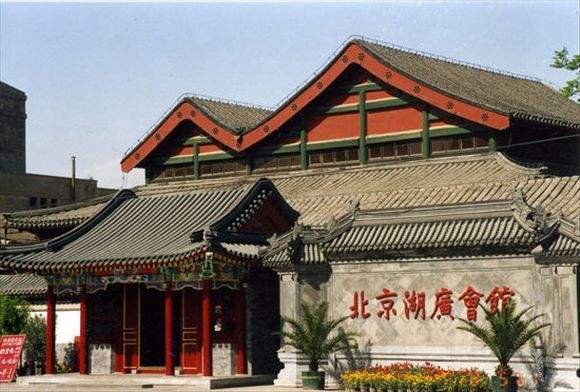Regional commercial history requires multifaceted research

The Peking Huguang Guild Hall was built in 1870 by two central officials from Hunan and Hubei provinces for business negotiations and other affairs.
Merchants, as a sociocultural group, can be categorized according to the specific culture of the area in which they ply their trade. Merchants in areas such as Jiangxi, Zhejiang and Anhui provinces developed their own specific cultural traits over the generations. As an important part of commercial history, regional commercial groups were profoundly impacted by regional culture.
The regional cultural environment breeds and shapes the regional economy. Yang Yiqing, executive dean of the Zhejiang Merchants Research Institute, said regional culture had a deep and lasting effect on people’s value systems, ways of thinking and codes of conduct as a result of groups being immersed in the culture for a long time.
Zhang Ping, a professor from the Capital Normal University and executive director of the Shaanxi Merchants Research Institute, suggested that the relationship between regional culture and commercial prosperity should be interpreted from the perspectives of geographic advantages, survival conditions and cultural ideology. She said geographic advantages decide the scale and character of a regional market. For example, the rise of Shanxi and Shaanxi merchants in the Ming and Qing dynasties was largely due to their dependence on the geographic advantages provided by the military’s “nine garrisons” built to prevent Mongolian invadors in the Ming Dynasty.
Survival conditions are another essential factor that influences regional commercial development. In the Ming and Qing dynasties, most of the inland merchant groups, such as the Shanxi and Anhui merchants, emerged in barren land areas where survival was more difficult. An emphasis on commerce in some regions also affected its development, forming a unique business atmosphere. In this case, one big difference between Shanxi and Anhui merchants was that Shanxi customs advocated business and trade while Anhui merchants in the Qing Dynasty had to master Confucianism first before becoming merchants.
Research on regional merchant groups holds a prominent place in regional commercial history. In addition to focusing on the cultural soil that nourished these merchant groups, attention should also be paid to the mechanisms and connecting ties between merchant groups, and their business scope, commodity types as well as trading habits, Zhang said.
Zhang said regional merchants groups were mobile. They sold different commodities and had different commercial structures. Therefore, research on regional merchant groups, despite the focus on regions, does not have to follow fixed geographic units. In contrast, studies of regional commercial history have fixed regional borders: there is Shaanxi commercial history in Ming and Qing dynasties, and Sichuan commercial history in the Han and Tang dynasties. In addition, the commercial market, the development of regional commodity resources, trade intermediary organizations and cross-regional exchange mechanisms are also worthy of further investigation. These studies aim to examine internal and external factors of regional commercial development in history, and summarize the historical rules of regional commercial development, as well as provide reference for today’s regional commercial development, and help the regional commercial enterprises to develop their advantages.
Regional commercial history research can start with a variety of historical buildings. Tang Ling, a professor from the School of History, Culture and Tourism at Guangxi Normal University, said guild halls signify the development level of a certain commercial community, and are the core element of ancient Chinese business. Study of regional commercial history should also examine other ancient commercial landmarks such as docks, arcades, theaters and temples.
Diverse regional cultures were formed in relatively closed situations in ancient China. In the age of globalization, traditional impacts of regional culture on local business activities have changed dramatically.
As economic integration proceeds, the integration of culture and economy is becoming broader and deeper, reducing the cultural differences between commercially developed areas, Yang said. All these factors weaken influence of traditional culture on the local social and economic activities. Against this backdrop, regional merchant cultures and groups will have fewer differences and fewer cultural elements.
However, there is still the necessity and possibility of maintaining distinctive regional cultures. Yang said that owing to the heterogeneity of geographic space and stratified social structure, there is hardly full infusion between merchant group cultures in different regions, and the border will not vanish completely. Maintaining these identifications of merchants’ images and unique cultural connotations is vital to cultural inheritance and economic vitality in a commercial society, he added.
